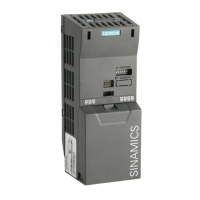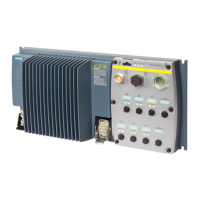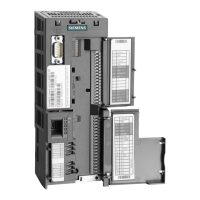Functions
5.7 Closed-loop control
CU240S and CU240E Control Units, FW 3.2
Operating Instructions, 03/2009, A5E02440075B AA
115
5.7.2.4 Using a speed encoder
Higher accuracy by using a speed encoder
A speed encoder increases the accuracy of the speed and the torque of the vector control for
speeds below approx. 10% of the rated motor frequency.
Commissioning the speed encoder
A speed encoder requires the following commissioning steps:
1. Connect the speed encoder (see below).
2. Set the encoder voltage using the DIP switches on the CU (see below).
3. Set the speed encoder parameters (see below).
4. Set the inverter to V/f control (P1300 = 0).
5. Power-up the motor with an average speed.
6. Compare parameters r0061 (speed encoder signal in Hz) and r0021 (calculated speed in
Hz) regarding the sign and absolute value.
7. If the signs do not match, invert the speed encoder signal (P0410 = 1).
8. If the absolute value of the two values do not correspond, check P0408, the speed
encoder wiring and the setting of the corresponding DIP switch.
9. Switch over to a control type with speed encoder: P1300 = 21 or P1300 = 23.
Connect the speed encoder
An encoder can only be connected to CU240S, CU240S DP, CU240S DP-F, CU240S PN or
CU240S PN-F.
Only encoders with two pulse tracks A and B offset through 90° may be connected.
Table 5- 36 Terminals on the CU to connect the speed encoder
Terminal Designation Function
28 U0V OUT Reference potential of the power supply voltage (terminal 9)
33 ENC+
SUPPLY
Supply voltage for the encoder
70 ENC AP Pulse track A, non-inverting input
71 ENC AN Pulse track A, inverting input
72 ENC BP Pulse track B, non-inverting input
73 ENC BN Pulse track B, inverting input
74 ENC ZP Zero signal, non-inverting input
75 ENC ZN Zero signal, inverting input
0

